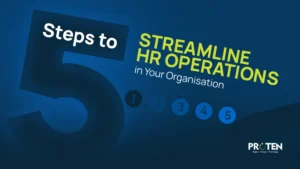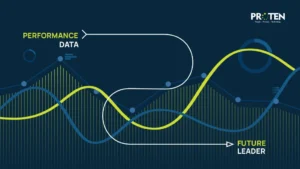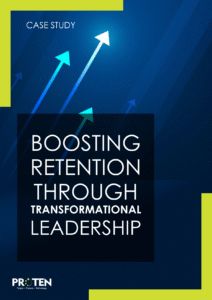Employee engagement is one of those phrases that gets thrown around a lot, but when you strip it down, it’s about making sure your people are connected to what they’re doing and if they’re invested in the big picture, as compared to just showing up because they have to.
This shift from satisfaction to true engagement has changed how forward-thinking companies shape people strategies. Engagement data shows what works, what needs fixing, and what’s at risk.
A Gallup study showed that companies that take engagement seriously were 21% more profitable, 17% more productive, and had 51% less turnover, compared to those who don’t. This proves that engagement insights, when applied correctly and effectively, are a force multiplier across businesses.
But what does that look like in action?
This blog will show you how to interpret engagement signals, apply insights, and avoid common pitfalls.
In minutes, you’ll see engagement as a compass for recruitment, retention, and culture—not just a destination.
What makes employee engagement insights valuable?
When we talk about engagement insights, it’s easy to think of survey scores or reports, but that’s only surface level. Employee engagement is a mix of different thoughts, emotions, behaviors, and beliefs that employees hold about their roles, their leaders, and the company they’re a part of.
Data reveals real value in people’s work experiences, from frustrations and blockers to the moments that motivate them.
For example, if engagement scores drop in one department, that may signal a leadership issue or a burnt-out team. If new hires report low engagement in their first 60 days, your onboarding process likely needs fixing.
These aren’t only HR problems but business issues. Addressing them early leads to better output, happier customers, and stronger teams.
The types of engagement data that matter
Surveys provide useful information, but they shouldn’t stand alone.
Deeper insights come from observation through onboarding feedback, exit interviews, pulse surveys, and one-on-ones, where people share more than they would on a form.
Additionally, patterns like frequent absences or being disengaged in meetings can say a lot if you are willing to look into them.
It’s also important to look at these trends over time instead of focusing on one-time scores because a dip in engagement during a single quarter might not warrant panic. Still, a consistent decline over three quarters might indicate structural issues.
Also, segmenting data by location, tenure, department, manager, or demographic group allows you to find the nuance within the numbers.
For instance, you might discover that your junior staff are more engaged than mid-level managers, which could point to career development gaps or a need for support.
How employee engagement insights shape real strategy
When engagement data becomes part of the strategic toolkit, every area of people management benefits. Let’s look at a few examples:
1. Hiring: Knowing what keeps current employees engaged helps you refine your EVP (Employee Value Proposition), recruitment messaging, interview questions, and candidate assessments.
2. Onboarding: Engagement feedback shows you if the promise matches the reality, and if it doesn’t, onboarding is your moment to close the gap.
3. Manager development: If certain teams consistently score low, that’s a flag for leadership support or training. The same logic applies to career development because if employees are disengaged due to feeling stuck, then you might need to have a closer look at your L&D strategy.
4. Retention. Disengagement often shows up quietly long before someone hands in notice, and employee engagement data helps you catch it early.
When all of this is woven together, it shapes your organisational culture, and by turning employee engagement insights into action, you send your employees the message that you care. This culture of responsiveness builds trust, which is the foundation of lasting engagement.
Common mistakes undermining your engagement-driven strategy
Many companies aim to use engagement data to drive better workplace strategies, but common pitfalls often get in the way. Here are the key mistakes to avoid:
1. Collecting Data Without Direction
Collecting feedback without a clear direction or priorities can get you lost in dashboards, charts, and reports, leaving you overwhelmed, which is why, instead, you should first plan what you’re collecting the data for and what decisions it will shape.
That way, your insights are more purposeful and help you progress.
2. Failing to Close the Feedback Loop
Employees invest time, though, and trust in providing feedback, and when there’s no response, that trust erodes, making it harder for them to participate in the future, as they have seen that no action is being taken.
To maintain engagement and build credibility, ensure each action taken is communicated to the employees so that they know their voices are not just heard but also valued.
3. Treating All Feedback Equally
It’s impossible to address every single comment or suggestion the same way because not all feedback carries the same weight, and taking the wrong action on feedback can dilute your efforts.
What works better is stepping back and looking for patterns, like what people are saying again and again, or where the biggest challenges seem to be. This is where your effort counts.
4. Ignoring Context Behind the Numbers
Numbers mean nothing without the context behind them, and a dip in engagement may have nothing to do with the work itself, as sometimes it could be the fallout from a restructuring, or anxiety over a leadership change.
The data is there to point you in a direction, and if you don’t ask why, you’ll miss the mark.
How to bring strategy and insight together
To move from insight to impact, you need a structured, repeatable approach. Here’s how to operationalize an engagement-driven strategy that works:
1. Treat engagement reviews with he same level of importance and consistency as you would budget meetings, positioning them as a core element of strategic business planning. Explore context behind the data and use them to uncover signals that drive employee experience.
2. Don’t take data at face value, instead, use it to ask sharper and deeper questions. Additionally, treat recurring trends as hypotheses that can be tested and validated through follow-up methods like focus groups, pulse surveys, or one-on-one interviews.
3. Leverage smart technology and machine learning tools to spot early signs of burnout and disengagement, or predict turnover risk before it becomes a problem. It’s important to note though, that you’re only using their insights to strengthen your judgement, not letting them make the decisions for you.
4. Align your HR projects with what employees within your company are actually asking for, instead of what is trending among other companies. This way your efforts are more realistic, shaped by real voices and needs instead of assumptions.
When interpreted collaboratively, tested through action, and embedded in real business strategies, employee engagement insights become your most powerful lever for building a workplace where people want to stay, grow, and perform.
Final thoughts…
True people strategy doesn’t start with policies or programs, instead, it starts with a hunger to understand what your people are experiencing, what they’re not saying, and what it would take to help them thrive.
Employee engagement insights aren’t just a mirror of the present; they’re also a preview of your future if you’re bold enough to act on what you learn.
So don’t just track engagement, instead translate it, build with it, and ultimately, let it shape how you hire, lead, develop, and inspire, because when your people feel seen, your strategy becomes inevitable.
Ready to Transform Your People Strategy? Let’s turn your engagement data into bold action. Book a free consultation with our HR experts today.










